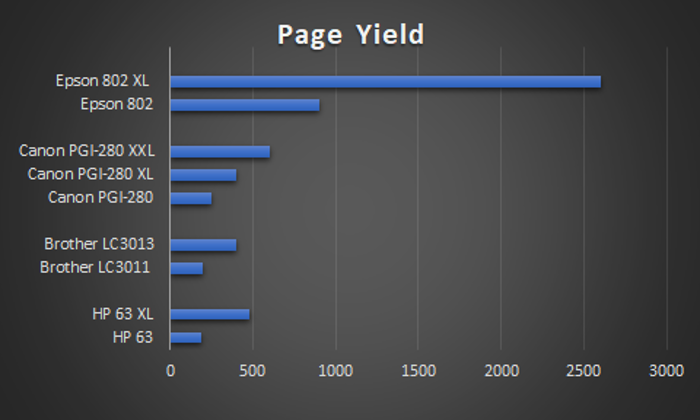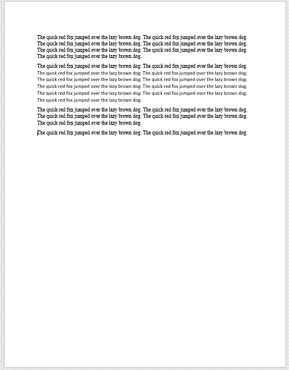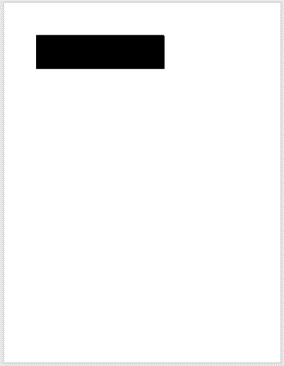
Purchasing an ink cartridge for your printer is not an easy task. Not only do you need an exact type of printer ink to fit your highly specific printer model, but it’s also complicated even more by High Yield, Standard, and Extra High Yield cartridge sizing. It’s easy to get lost in the terminology, but we’ve broken down the most important facts for you to know about printer ink cartridges.
Let’s start with basic terminology:
Standard Yield: The default or entry-level ink cartridge. This is the most common type of ink cartridge that will print a serviceable amount of pages but needs to be replaced often. Depending on the cartridges, they print anywhere from 120 to 300 pages.
High Yield: This printer cartridge has the ability to print more pages than the standard yield, although they both use the exact same cartridge. Printing capability ranges from 50% more pages being printed to even double the amount of standard yield, depending on which printer model you are using. The reason a high yield cartridge prints more is because it contains more ink inside. Certain companies like HP and Canon, use the term XL in lieu of High Yield although they are essentially identical.
Extra-High Yield: The cartridge with the highest page yield that is commercially available, Extra-High Yield, can often print four times more pages than a single standard yield cartridge. This is often your best bet when it comes to saving money on printer ink. They’re also referred to as Super High Yield by Brother, or XXL by Canon. Not all printers will support an extra high yield option; these are often limited to select printer models.
Starter Capacity: The smallest capacity ink cartridge, this is usually bundled with new printers to show off the capability of the printer. These cartridges only contain about 25% of a Standard Yield Cartridge and cannot be purchased commercially.
Is the high yield ink cartridge bigger in size?
No, physically, there is no difference between Standard and High Yield ink cartridges.
The only difference is that the high yield ink cartridges contain more ink. In most cases, the standard cartridges contain half as much ink as the high yield.
So which ink is right for you?
You can look at a few things to decide what is the right ink for you. Page yield is probably the best-kept secret since it gives you the most evidence to make your decision.
What is Page Yield?
How much more ink is in HP XL as opposed to the standard yield? While there is no easy way to measure the liquid in the cartridge, you can gain more insight by checking the page yield. The page yield is usually not advertised on the box and sometimes requires some digging on manufacturers’ websites. These are sometimes visible under the Product Specifications category.
Page yield is the estimated number of pages that each ink cartridge will print before running out.
Knowing the page yield for a printer ink cartridge can help you gauge how much you can print before having to buy a new one.
Not all manufacturers abide by the same page yields and often vary greatly depending on brand and model.

So what affects page yield? There are a lot of variables that go into calculating page yield which includes:
- Printer Model
- Frequency of Printing
- Paper Type Used
- Room conditions such as Humidity and Temperature
- Content printed
It is important to note that page yields are just approximations.
Even though the page yield is 8000 pages, that does not guarantee you to print that many pages. Page yields are calculated by page density or the area of space that the ink occupies. Most page yields are calculated with a 5% page density in mind. This is what an A4 page with 5% page density looks like:
|
|
VS |
|
A lot less than you expected, right? This consists of a single page, so don’t be surprised if your cartridge runs out of ink faster than expected.
But there is a much more accurate way of calculating how much ink you are really using.
What is Cost Per Page?
Cost-Per-Page (CPP), also known as Price-Per-Page (PPP) is simply a measurement that allows you to convert how much money you are spending per printed page.
You can calculate Cost-Per-Page easily by using the equation below:
Page Yield / Price of Ink Cartridge = CPP
This simple calculation could save you tons of money in the future. Let’s take HP 63 ink cartridge for example:
480 / $39.99 = $0.12
So that comes out to 12 cents per every page printed. Now let’s take a deeper look at the popular HP 63 ink.
But which is really the cheapest ink? As you can see, although the HP 63XL and the Remanufactured 1ink Cartridge are exactly the same XL size with the same quality ink, you are saving 50% more money with the remanufactured cartridge. Using remanufactured cartridges saves you three times more than purchasing a standard HP 63 ink cartridge.
Conclusion
With a large variety of sizing and market price across the industry, it’s difficult to pinpoint the pricing sweet spot. As a general rule, buying the high yield cartridge does save you more money on ink in the long run.
We highly recommend utilizing the Cost Per Page formula. This will precisely calculate how much is being spent per page rather than following other vague guidelines.
To get the most for your money, using remanufactured and compatible cartridges are the optimal solution. At 1ink.com, we offer High Yield ink cartridges as default for all of the most popular models, such as HP, Brother, and Canon, to name a few. With a 100% Satisfaction guarantee, you should have no fear when purchasing one of our high-quality products. With remanufactured toners and printer ink for a multitude of printer models, we have the right ink for you.
Visit our website at 1ink.com for exclusive discounts of up to 80% off the name-brand competitors.


